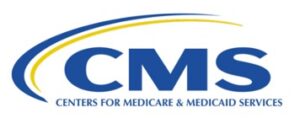Opioid & Addiction Recovery
Opioid Use Disorder Treatment

Optimal Risk Management
Outsource the patient to an organization specializing in OUD treatment while the patient remains on the CCARE HEALTH Management Ecosystem.
The referring physician can be compensated a flat rate per month for assisting with the OUD treatment review. TRIAD BEHAVIORAL and CREATIVE INTELLIGENCE will manage and bill for MAT for each eligible OUD patient.


Medication-assisted Treatment
Medication-assisted treatment (MAT) is the use of medications, in combination with counseling and behavioral therapies, to provide a “whole-patient” approach to the treatment of substance use disorders… MAT has proved to be clinically effective and to significantly reduce the need for inpatient detoxification services for these individuals. MAT provides a more comprehensive, individually tailored program of medication and behavioral therapy that address the needs of most patients.
The ultimate goal of MAT is full recovery, including the ability to live a self-directed life. This treatment approach has been shown to:
- Improve patient survival
- Increase retention in treatment
- Decrease illicit opiate use and other criminal activity among people with substance use disorders
- Increase patients’ ability to gain and maintain employment
- Improve birth outcomes among women who have substance use disorders and are pregnant
"Opioid use among older adults can result in excessive sedation, respiratory depression, and impairment in vision, attention, and coordination, as well as falls "

Team-based Care for Best Practices
Coordinated Through a Single Ecosystem
“Opioid addiction aka Opioid Use Disorder (OUD) is a chronic, relapsing brain disease, like heart disease or diabetes.”
"While illicit drug use typically declines after young adulthood, nearly 1 million adults aged 65 and older live with a substance use disorder"

“Too few health care professionals have specialized training in addiction medicine. Although some primary care doctors have stepped in to fill the void, most are unwilling to treat patients with addictions.”
MAT has been associated with $223 to $153 lower total health care expenditures per month than other non-medication behavioral health treatment episodes, most likely because patients are less than one half as likely to relapse when treated with MAT.
“Medicare beneficiaries (aged and disabled) have among the highest and fastest-growing rates of diagnosed opioid use disorder.”


“Opioid addiction aka Opioid Use Disorder (OUD) is a chronic, relapsing brain disease, like heart disease or diabetes.”
"While illicit drug use typically declines after young adulthood, nearly 1 million adults aged 65 and older live with a substance use disorder"

“Too few health care professionals have specialized training in addiction medicine. Although some primary care doctors have stepped in to fill the void, most are unwilling to treat patients with addictions.”
MAT has been associated with $223 to $153 lower total health care expenditures per month than other non-medication behavioral health treatment episodes, most likely because patients are less than one half as likely to relapse when treated with MAT.

MAT PROVIDER
Leveraging the SAMHSA certified provider’s expertise in understanding MAT treatment protocols
CASE MANAGER / COACH
Trained specifically in the treatment of addiction – daily patient engagement and available 24/7/365
PSYCHIATRIST
Monthly assessment and chart review with recommendations to the MAT Care Team
BEHAVIORAL HEALTH SPECIALIST
Addiction Counselor regular sessions with each patient to ascertain and document status and progress and collaborate with the CMAT Care Team on adjustments to the Care Plan
SOCIAL SUPPORT NETWORK
Assess and address Social Determinants of Health needs and provide peer community support
REFERRING PHYSICIAN
Is compensated for the review of the patient MAT Care Plan. The patient’s MAT results often adjust medical decision-making and require additional treatments for comorbidities.’
“Medicare beneficiaries (aged and disabled) have among the highest and fastest-growing rates of diagnosed opioid use disorder.”